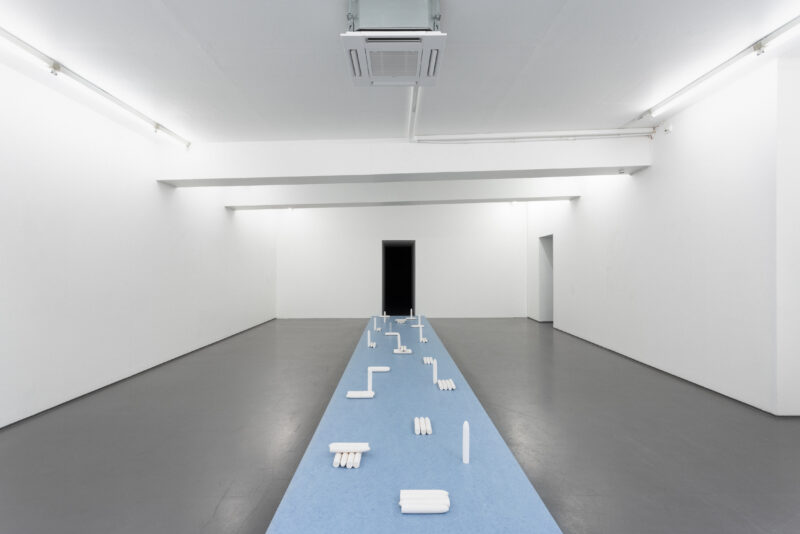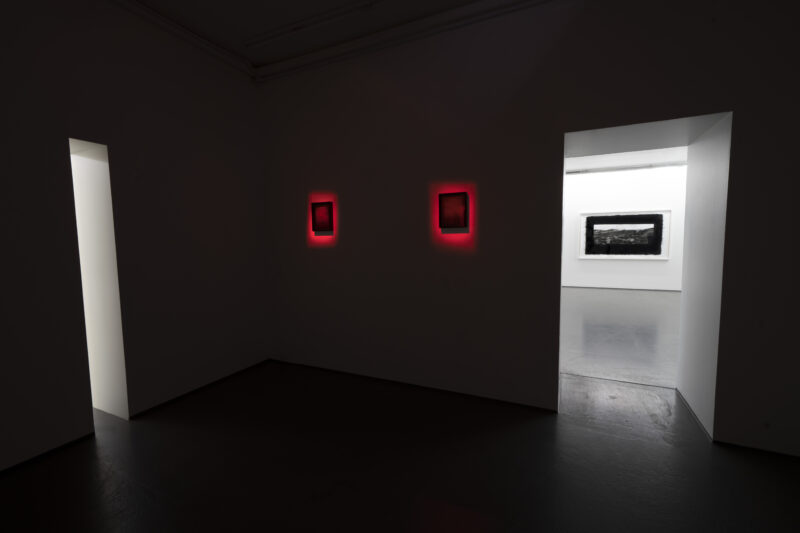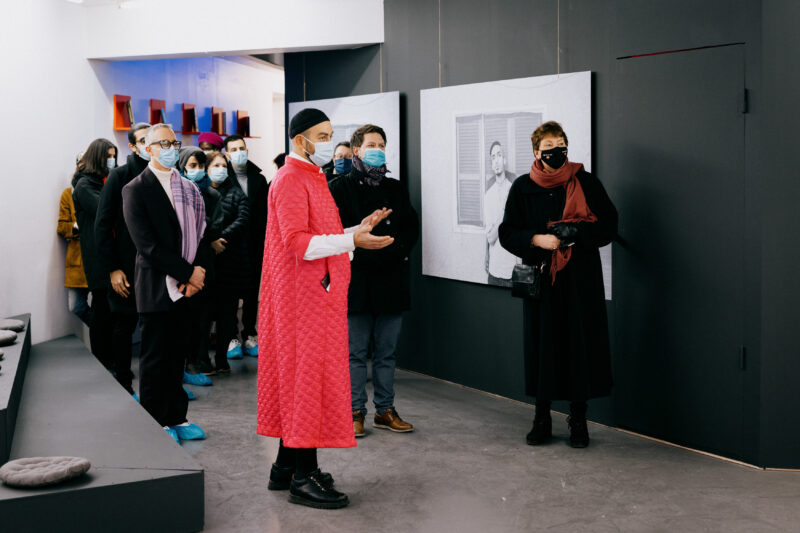Thank you 2022
A thank you from Fotogalleriet
For å lese dette brevet på norsk, trykk her.
As the year draws to an end, Fotogalleriet wishes to thank everyone who has been a part of our programmes and our support network in 2022. Everyone who has sustained our hope and belief in the future, and who has continually inspired us with their commitment to their artistic and activist practices.
At the beginning of this year, Bassel Hatoum, President of Skeiv Verden (Queer World) and curator of the exhibition project Claiming Space, began his welcoming speech by saying: “Safety is a privilege many take for granted.”
Safety is a feeling, but it is also a state of mind and a physical respite that a community and a society establishes through mutual trust. Safety is not a given, even, or perhaps particularly, in spaces dedicated to arts and culture. We have to acknowledge that most art institutions are still the product of nation-building processes, mirroring a dominant cultural majority withholding the spaces and methods for visibility and claiming space in official histories and canons.
The issue of representation today is about structures. With the board of Fotogalleriet, in our small capacity, we revised our statutes in 2021, which have effectively changed to include permanent seats prompting diversity in positions of power. This has enabled us to discuss more what we show, how to get to certain strategic decisions, and from which perspectives. Such discussions have gone hand in hand with the first endowed Curatorial Fellowship aimed at perturbing the canons of educational and professional dictates.
Claiming Space was curated by Hatoum on behalf of Skeiv Verden (Queer World), a nationwide organisation for LGBTQIA+ individuals with a minority background. The project was a response to an invitation from Fotogalleriet to Hatoum and Skeiv Verden to rethink and explore with us how minority perspectives are included and discussed, and how we as a publicly accessible institution can reimagine our structures and contribute to a necessary shift from inclusion through representation to emancipation through power of (self)definition. As an exhibition and series of public conversations challenged such givens of accessibility and the discussions around representation which seem to never result in accountability or structural change in the field of institutionalised art production and dissemination. Through art and architecture the project questioned the field’s alleged transparency and openness to critique as a potential threat and source of exhaustion and disengagement to the people and communities who don’t belong to a majority with power of definition. Additionally, by not conforming or accepting the premise of the discussions around your minority status set out by the majority, you are automatically excluded from discussions which concern your lived experience. Being public about oneself is a privilege not all can afford, and in a field which speaks about access and inclusion predominantly through the gesture of representation, we have to remember that “representation” in the literal and figurative sense is not synonymous with accessibility and visibility for everyone.
Looking for who has struggled before us, we picture and create our own genealogies to give credit to people who have strived to change constituted and oppressive norms. Through the exhibition and programme Queer Icons, Fin Serck-Hanssen, Bjørn Hatterud, and Caroline Ugelstad Elnæs collected and shared with us personal stories which transmit strategies for both individual and collective emancipation. Each icon, in their own way, affected the progress of history in Norway through individual contributions, leading the country’s governing bodies to endorse the rights we continue to relish and defend today. HAiKw/ (Harald Lunde Helgesen and Ida Falck Øien) importantly complicated the exhibition reading: against the impression of hard surfaces and words, they used textile and queer fonts to remind us that neither history nor social norms are immovable. To change the hardness of canonical and patriarchal structures, we must view and treat history as soft and unsettled.
In the summer, we experimented with how we can give visibility and utilise our exhibition space and location when the Fotogalleriet’s regular opening hours are suspended for the summer holidays. We partnered with The Norwegian Center against Racism’s youth group Agenda X and the ongoing project Agenda TeXt. Displayed in our windows facing the street and a park, passersby could read poetry and scan QR codes linking to video and audio performances by young writers. On the exhibition’s final day, and the first day of the new academic year, the authors read their own texts at a public event. The texts concerned themselves with belonging, alienation, conversations about cultural diversity, living in a city, and the empowerment and legitimisation of young people and their voices.
In September, American artist Brittany Nelson subsequently turned our gaze to other unexpected icons, like a rover sent to Mars with a life expectancy of 90 days, instead ended up living there, in solitude, for 14 years. As the robot ‘Opportunity’ transcended its original given function and scientifically determined lifespan it became a personified icon. Nelson also granted us an intimate encounter with science fiction author Alice B. Sheldon, who in her lifetime wrote and was published under the male pseudonym James Tiptree Jr. In intertwining these stories, which “queer” time and space, Nelson transmits to us the role that gender and imagination plays in the intersecting fields of technology, science, culture and image production. As a promise of an as of yet unwritten rendezvous, Meet Me At Infinity connected the robot Opportunity and Tiptree Jr. to the utopian imaginary of a “genderless” (and thus liberated) future. Despite claiming its space outside of more quotidian concepts of time and space, Meet Me At Infinity reminded us of the importance of futures not yet written.
By monumentalising everyday life and her own lived experiences, the Swedish artist Victoria Verseau illuminates how we every day use “universal” yet highly personal and intimate aids to mediate the relationship between how we see ourselves and how the world sees us. As an artist, filmmaker and trans woman, Verseau calls for a discussion of how stories about transitioning are told, and how we relate to the distinction between the private and the public when we tell and encounter such stories. She implicates the private, which is always also inevitably public, and where the public has a continuous responsibility. The exhibition Hope Is A Dangerous Thing For Women Like Us is an invitation to dare to dream, even when dreams carry with them the risk of pain, loss and hopelessness. Her work is on view at Fotogalleriet until 8 January 2023.

Claiming Space was curated by President of Skeiv Verden Bassel Hatoum, with exhibition architecture by architect Antoine Fadel. The public program was coordinated together with Hatoum by Miki Gebrelul. Contributing artists were Ahmed Umar, Chai Saeidi, and Damien Ajavon, Carl Joseph Aquilizan, Hamid Waheed and Mohamed Mohamed. Graphic design by Abirami Logendran. Participating in the conversation program were Dávvet Bruun-Solbakk, Thee Yezen Al-Obaide, and Zutana Hadaddeen, Grace Tabea Tenga, Guro Jabulisile Sibeko, and Hanan Benammar, Hanna Asefaw, Ninthu Paramalingam, and Sigrid Elise Høeg, Tina Lam and Safe Space Collective, Maruwa Kerella, Aleks Gosto and Deniz Akin, Selena Sefany, Roza Aghili Taslimi, Selma Skov Høye and Mabell Holand. Other contributors were ASSATA – an activist library and the Copenhagen-based nightlife collective Group Therapy.
The Queer Icons Gerd Brantenberg, Per Barclay, Maurice Budini, Lill-Ann Chepstow-Lusty, Christeene, Vaginal Davis, Turid Eikvam, Cårejånni Enderud, Reidar Engesbak, Liv Finstad, Rolf Flatmo, Morten Sortodden, Stein Fosslie, Kim Friele, Halvard Haldorsen, Arne-Harald Hanssen, Dag Johan Haugerud, Armand Henriksen, Sven Johannessønn Henriksen, David Hoyle, Lars Daniel Krutzkoff Jacobsen, Brita Cappelen Møystad, Mona Nesje, Ulf Nilseng, Kjell Nordström, Kristin Norderval, Nelly Nylon, Genesis P-Orridge, Esben Esther Pirelli Benestad, Catherine Opie, Tom Ovlien, Svein Skeid, Calvin Ray Stiggers, Siri Sunde, Gudmund Vindsun, and Øyvin Palm. Photography by Fin Serck-Hanssen and texts by Bjørn Hatterud and Caroline Ugelstad Elnæs. Exhibition design by HAiKw/ – Harald Lunde Helgesen and Ida Falck Øien. Contributors to and participants in the public programme Benedicte Bølling, Bård Ydén, Carl Aquilizan, Caroline Ugelstad Elnæs, Christine Jentoft, Isak Bradley, Jae Nyamburah, Joseph Mardelli, Maria Lothe, Nadda Noor, Thee Yezen Al-Obaide, Tor Erik Bøe med Bastian Sand Scharning og Sofia Su (og kunst av Mia Waage, Markus Langen, Mia Waage, Silje Rønneberg Hogstad, Ida Falck Øien, Jonas T. Daatland), Truls Foss, Vertex Group, and filmmakers Christer Hellen and Torkel Gjørv, Dag Johan Haugerud, Frank Mosvold, Heidi Arnesen, Irasj Asanti, Lars Joakim Ringom, Marin Håskjold, Marja Bål Nango, Sabina Jacobsson, and Vebjørn Guttormsgaard Møllberg. Collaborators included Det Norske Teatret, Oslo/Fusion International Film Festival, Vega Scene, Frogner Kino, and RadiOrakel. Excerpts of and works som the exhibition have since been shown at Ringsaker public library, Odda Literature Symposium, Elvelangs, Rana Kunstforening, Pride Art, and the photofestival Oslo Negativ. Queer Icons is also published (in Norwegian) as a book by Pitch Forlag, with editor Bente Riise and design by Den Luca.
Agenda TeXt contributors Naomi Medina, Saffa, Amanda Anvar, Rahel Beraki, Fatima Talia, Farhad Soufi, Sana El Moussaoui, D4NC3 og Momina Hassan, SAK, Labeebah Qureshi, Zahra Al-Shorayer, Asha Abullahi, Oda Paaske, Shayma Abubaker Nuur, Abdirahmaan Hasan, Ayan Ahmed Arale, Ameli, Selma Helene Skaret Kielland and Fariha Fatima Malik. Agenda TeXt is coordinated by project leader Marie Dahle Lund and Agenda X Director of cultural activities Miriam Haile.
Brittany Nelson, CAP Saint Fons (Centre d’art de Saint-Fons) and director Alessandra Prandin, and Institut Français Norvège.
Victoria Verseau, IASPIS (The Swedish Arts Grants Committee), and Helge Ax:son Johnson Stiftelse.
Participating artists in DKS Lab 2022 (with Oslo Kunstforening) have been Mor Efrony, Lexie Owen, and Icaro Zorbar, and in Fotogalleriet’s productions for DKS Susanne Hætta, Marin Håskjold, and Nikhil Vettukatil. DKS is a national structure to ensure encounters with visual art and artists for students between the ages of 6-19. DKS Lab is a residency model to develop new visual art productions for DKS, co-funded by Kulturtanken and Sparebankstiftelsen DNB.
The Curatorial Fellow for 2022-23 is Dahir Hussein, whose exhibition will open March 2023. The Curatorial Fellowship position in 2022-23 is co-funded by Arts Council Norway, Bergesenstiftelsen, and Balansekunst.
Members of the newly established Fotogalleriet Youth Council are Abdirahman Hasan, Esma Bouhaddouz, Farah Suleman, Hamda Barise, Henny Holtedahl, Robin Hassanieh og Sair Alam.
We would also like to acknowledge ongoing partnerships and co-productions locally with Oslo Kunstforening, Kulturtanken, DKS Oslo, OsloMet, Agenda X, TrAP, Nøkkel til byen, Oslo/Fusion, Vega Scene, KulTur (Frivillighetssentralen/Deichman Tøyen), Lena Maria Vida, and our colleagues at Forbundet Frie Fotografer (The Norwegian Association for Fine Art Photographers).
Fotogalleriet’s principal funding comes from The Royal Norwegian Ministry of Culture and Equality, the Norwegian Photographic Fund, and the Oslo Municipality. For our programme in 2022 we would like to thank Arts Council Norway (Kulturrådet) and The Fritt Ord Foundation (Stiftelsen Fritt Ord) for extraordinary support. We would also like to thank Oslo Art Guide og Oslo Art Weekend for their work and support in making the work of small to medium size institutions and artists visible.

Internationally, we have found safety and support in transnational public spaces of open discussions to set forward demands to the field. We found a unique alliance with the first European Assembly of Contemporary Art Centers, which held digital and physical meetings. It prompted ideas and actions advancing gender equality and diversity in contemporary art centers and cultural institutions. In photography, we joined FUTURES, a European network of peers to support and nurture the professional development of artists across the world. Fotogalleriets nominated artists to the FUTURES network in 2022 is Chai Saeidi, Lesia Vasylchenko, Marin Håskjold, Nicole Rafiki and Nikhil Vettukatil. In light of the Russian invasion of Ukraine in February, we co-authored a letter of unconditional solidarity and support with Ukrainian art professionals. We would like to reiterate this solidarity and the call to authorities in the Nordic countries to comply with the EU regulations to facilitate the admission of refugees from the region and from other war-torn areas and to provide a haven for people who have been forced to leave their homes. Read the full letter her..
On behalf of the political offices and structures of both legislation and democratic representation they represent, we were honoured and thankful that Marianne Borgen, Mayor of Oslo, and State Secretary in the Norwegian Ministry of Culture and Equality Odin Adelsten Aunan Bohmann, opened the Claiming Space at Fotogalleriet as the first exhibition of the “Queer Cultural Year” 2022. We are particularly thankful for their presence as public support because it acknowledges the tireless work of organisations such as Skeiv Verden, working tirelessly, and often on a voluntary basis, on behalf of national minority communities, as well as the efforts made by small and medium sized institutions to sustain a free artistic and cultural field. Change almost always begins in smaller institutions and organisations, however, these are often written out of history and unrecognised in their struggle and contributions.
Because our experience of freedom is closely tied to the experience of a society which allows minority, artistic and cultural expressions to exist as a part of public culture, and discrimination and invisibility are structural issues, we rely on the support of such formalised political bodies to support the structures sustaining these freedoms, as well as the calls for necessary changes and challenges to them.

We wish you all a peaceful end of 2022 and look forward to welcoming you back in 2023!
On behalf of the Fotogalleriet team,
Dr Antonio Cataldo, Artistic Director
Miki Gebrelul, Head of Exhibitions
Håkon Lillegraven, Head of Mediation and Communication
Alf Ollett, Art handler and Technician
Sakib Saboor, Digital Consultant and Mediator
Dahir Hussein, Curatorial Fellow 2022-23
Arash Shahali, International Press Advisor